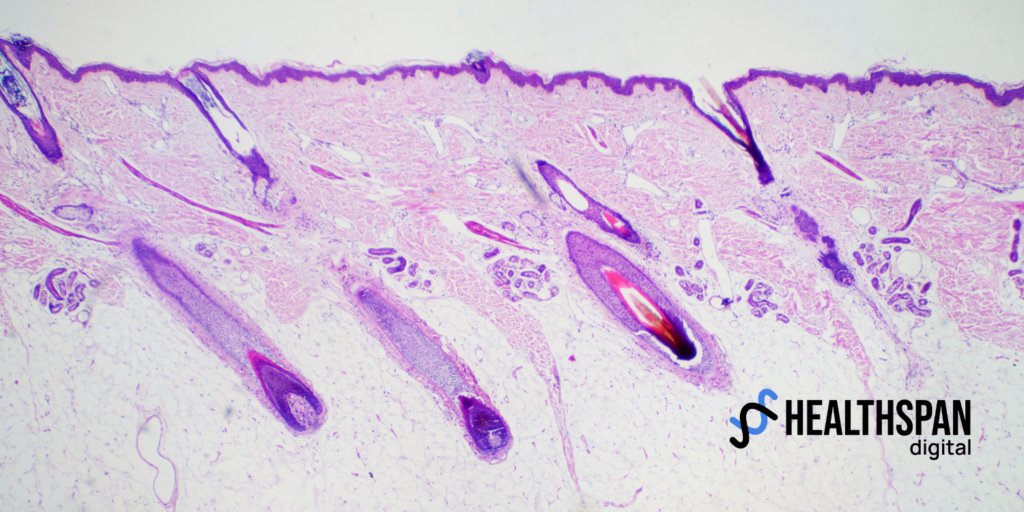Constantine A. Stratakis MD D(med)Sci PhD, Co-Founder — Healthspan.Digital, Chief Science Officer
Pediatrics, Endocrinology & Genetics
Hypertension (HTN) is one of the leading causes of overall morbidity and mortality in the world.1Most patients are diagnosed with essential HTN, and secondary HTN accounts for up to 10% of the cases and is mainly due to kidney disease, vascular abnormalities, and metabolic disorders, such as diabetes.2 Primary aldosteronism (PA) accounts for up to 6% of primary care patients with HTN and may be responsible for as much as 10% to 15% of referral cases with difficult to control HTN.3 In the past 30 years, genetic causes of PA have been found from the chimeric CYP11B1/CYP11B2 genes in glucocorticoid-remediable hyperaldosteronism, to pathogenic variants in the KCNJ5, ATP1A1, ATP2B3, CACNA1D, CACNA1H, CLCN2, and CTNNB1 genes, rarely in the germline and mostly in the somatic state, within the aldosterone-producing adenoma (APA) tissue only.4 Even for somatic mutations, genetics clearly plays a role in the development of PA, as recent studies in Black individuals in the United States showed.5 The genetic cause of PA, germline, somatic, or simply predisposition, is important not only for counseling, medical treatment, or prognosis, respectively, but also to decide who among the patients might benefit from surgery. Yet, the latter requires either invasive procedures or it is impossible for some patients who may receive inadequate medical therapy for years.
A study by Chen et al6 published recently in JACC Asia uses machine learning models to identify APAs with KCNJ5 mutations among patients with PA using baseline characteristics and routine blood and urine tests preoperatively. The study, the first of its kind, needs to be confirmed in a larger dataset and population, but it is characteristic of the changes we see happening now every day in the practice of medicine.
As Cicero said, “O tempora, o mores! Nihil nimium vetus proferam,” which roughly translates to “What an age we live in! Yet I will speak of what is not very ancient history!”7
Indeed, the story of KCNJ5 in APAs is not that old: it is only 11 years since we published the first KCNJ5 mutations in our patients,8 new phenotypes associated with KCNJ5 defects, including somatic mosaicism for defects of the same gene in a patient with PA and adrenocortical hyperplasia, and a novel KCNJ5variant associated with cyclical Cushing syndrome in childhood,9, 10, 11, 12, 13 findings that we reviewed recently.14
In this short time, it became clear that new protocols were needed to identify patients with PA who would benefit most from surgical intervention, especially those with KCNJ5defects.15 The first applications of machine learning in the diagnosis and management of PA were, as expected, where the data were more robust, such as in steroid profiling16 and proteomics.17 Since the publication of the first study to use machine learning and artificial intelligence in PA using common clinical and biochemical data,18 there have been now almost a dozen such reports including the latest ones,19,20 yet none that specifically accessed a particular genotype, such as the study by Chen et al.6
The study by Chen et al6 is not only well done (as far as methods is concerned), but also pioneering in its concept: linking a particular genetic alteration to a specific phenotype that causes aldosterone excess and may be treated surgically. And, of course, there are many more genes involved and, thus, we are looking forward to what comes next almost certainly: using similar approaches to differentiate genetic defects and guide treatment and prognosis of patients with PA.
Applying machine learning to benefit patients with PA and HTN is a welcome development in a field that has seen extraordinary scientific advances in the past 2 decades, without clear clinical benefit: deciding who will benefit from surgery remains challenging to date. Almost certainly, similar methods (ie, artificial intelligence) will be used for the identification or the design of molecules that may be used therapeutically (instead of surgery) especially for those patients with PA harboring genetic defects in smaller lesions. Prediction models may be able to identify who has what pathogenic variants in the KCNJ5, ATP1A1, ATP2B3, CACNA1D, CACNA1H, CLCN2, or CTNNB1genes and provide the respective molecular therapy.
Indeed, “what an age we live in!” A marvelous age in medical discoveries and a true revolution in the practice of medicine!
References
1. G. Pitsava, F.R. Faucz, C.A. Stratakis, F.Hannah-Shmouni
- Update on the genetics of primary aldosteronism and aldosterone-producing adenomas
- Curr Cardiol Rep, 24 (9) (2022), pp. 1189–1195, 10.1007/s11886–022–01735-z
- View article
- View in ScopusGoogle Scholar
2. E. Asbach, A. Kellnar, M. Bekeran, J. Schelling, M. Bidlingmaier, M. Reincke
- Prevalence of primary aldosteronism in newly diagnosed hypertensive patients in primary care
- Exp Clin Endocrinol Diabetes, 130 (12) (2022), pp. 801–805, 10.1055/a-1938–4242
- View PDF
- Google Scholar
3. A. Spyroglou, L. Handgriff, L. Müller, et al.
- The metabolic phenotype of patients with primary aldosteronism: impact of subtype and sex — a multicenter-study of 3566 Caucasian and Asian subjects
- Eur J Endocrinol, 187 (3) (2022), pp. 361–372, 10.1530/EJE-22–0040
- View article
- View in Scopus Google Scholar
4. E. Le Floch, T. Cosentino, C.K. Larsen, et al.
- Identification of risk loci for primary aldosteronism in genome-wide association studies
- Nat Commun, 13 (1) (2022), p. 5198, 10.1038/s41467–022–32896–8
- View PDF
- View in Scopus Google Scholar
5. K. Nanba, K. Omata, C.E. Gomez-Sanchez, et al.
- Genetic characteristics of aldosterone-producing adenomas in Blacks
- Hypertension, 73 (4) (2019), pp. 885–892, 10.1161/HYPERTENSIONAHA.118.12070
- View article
- View in Scopus Google Scholar
6. L.-C. Chen, W.-C. Huang, K.Y. Peng, et al.
- Identifying KCNJ5 mutation in aldosterone-producing adenoma patients with baseline characteristics using machine learning technology
- JACC: Asia, 3 (2023), pp. 664–675, 10.1016/j.jacasi.2023.03.010
- View PDFView articleView in Scopus Google Scholar
7. Loeb Classical Library
- https://www.loebclassics.com/view/marcus_tullius_cicerosecond_speech_verres/1928/pb_LCL293.349.xml, Accessed 21st Jun 2023
- Google Scholar
8. P. Xekouki, M.M. Hatch, L. Lin, et al.
- KCNJ5 mutations in the National Institutes of Health cohort of patients with primary hyperaldosteronism: an infrequent genetic cause of Conn’s syndrome
- Endocr Relat Cancer, 19 (3) (2012), pp. 255–260, 10.1530/ERC-12–0022
- View article
- View in Scopus Google Scholar
9. E. Charmandari, A. Sertedaki, T. Kino, et al.
- A novel point mutation in the KCNJ5 gene causing primary hyperaldosteronism and early-onset autosomal dominant hypertension
- J Clin Endocrinol Metab, 97 (8) (2012), pp. E1532-E1539, 10.1210/jc.2012–1334
- View article
- View in Scopus Google Scholar
10. S. Monticone, S. Bandulik, J. Stindl, et al.
- A case of severe hyperaldosteronism caused by a de novo mutation affecting a critical salt bridge Kir3.4 residue
- J Clin Endocrinol Metab, 100 (1) (2015), pp. E114-E118, 10.1210/jc.2014–3636
- View article
- View in Scopus Google Scholar
11. A. Sertedaki, A. Markou, D. Vlachakis, et al.
- Functional characterization of two novel germline mutations of the KCNJ5 gene in hypertensive patients without primary aldosteronism but with ACTH-dependent aldosterone hypersecretion
- Clin Endocrinol (Oxf), 85 (6) (2016), pp. 845–851, 10.1111/cen.13132
- View article
- View in Scopus Google Scholar
12. A.G. Maria, M. Suzuki, A. Berthon, et al.
- Mosaicism for KCNJ5 causing early-onset primary aldosteronism due to bilateral adrenocortical hyperplasia
- Am J Hypertens, 33 (2) (2020), pp. 124–130, 10.1093/ajh/hpz172
- View PDF
- View in Scopus Google Scholar
13. C. Tatsi, A.G. Maria, C. Malloy, et al.
- Cushing syndrome in a pediatric patient with a KCNJ5 variant and successful treatment with low-dose ketoconazole
- J Clin Endocrinol Metab, 106 (6) (2021), pp. 1606–1616, 10.1210/clinem/dgab118
- View article
- View in Scopus Google Scholar
14. C.D.C. Kamilaris, C.A. Stratakis, F. Hannah-Shmouni
- Molecular genetic and genomic alterations in Cushing’s syndrome and primary aldosteronism
- Front Endocrinol (Lausanne), 12 (2021), Article 632543, 10.3389/fendo.2021.632543
- View article
- View in Scopus Google Scholar
15. J. Burrello, A. Burrello, J. Pieroni, et al.
- Development and validation of prediction models for subtype diagnosis of patients with primary aldosteronism
- J Clin Endocrinol Metab, 105 (10) (2020), p. dgaa379
- Google Scholar
16, G. Eisenhofer, C. Durán, C.V. Cannistraci, et al.
- Use of steroid profiling combined with machine learning for identification and subtype classification in primary aldosteronism
- JAMA Netw Open, 3 (9) (2020), Article e2016209, 10.1001/jamanetworkopen.2020.16209
- View PDF
- View in Scopus Google Scholar
17. Z. Erlic, P. Reel, S. Reel, et al.
- Targeted metabolomics as a tool in discriminating endocrine from primary hypertension
- J Clin Endocrinol Metab, 106 (4) (2021), pp. 1111–1128, 10.1210/clinem/dgaa954
- View article
- View in Scopus Google Scholar
18. H. Kaneko, H. Umakoshi, M. Ogata, et al.
- Machine learning based models for prediction of subtype diagnosis of primary aldosteronism using blood test
- Sci Rep, 11 (1) (2021), p. 9140, 10.1038/s41598–021–88712–8
- View PDF
- View in Scopus Google Scholar
19. S. Shi, Y. Tian, Y. Ren, et al.
- A new machine learning-based prediction model for subtype diagnosis in primary aldosteronism
- Front Endocrinol (Lausanne), 13 (2022), Article 1005934, 10.3389/fendo.2022.1005934
- View article
- View in Scopus Google Scholar
20. S. Karashima, M. Kawakami, H. Nambo, et al., JPAS/JRAS Study Group
A hyperaldosteronism subtypes predictive model using ensemble learning
Sci Rep, 13 (1) (2023), p. 3043, 10.1038/s41598–023–2965



